
Seasonal Pro Secrets
How we keep lawns, trees and shrubs healthy all year round
Leveraging years of lawn and tree care expertise, we prioritize fertilization, weed control, and insect management. Our strategic approach includes tailored fertilization schedules for optimal growth, preventive weed measures, and eco-friendly insect control. Implementing these practices at the right times ensures lush, vibrant, and pest-resistant outdoor spaces.
Spring
As spring arrives and soil temperatures warm up, lawns experience a burst of growth with grasses becoming more active and greening up. The warmer soil prompts the development of robust root systems in the grass. Simultaneously, weed seeds germinate, and weeds grow rapidly, necessitating weed control measures. Trees respond to the warmth with bud break, initiating new growth and flowering. Microbial activity in the soil increases, aiding in nutrient cycling. However, warmer soil can also trigger the activity of soil-borne pathogens, emphasizing the importance of monitoring for diseases. Additionally, pests and insects may become more active. Human interventions, such as fertilization and pest control, play a role in shaping the overall health of lawns, weeds, and trees during this season.
Lawn
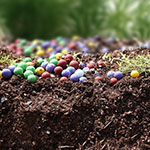
Regularly scheduled fertilization is key
Regular lawn fertilization is vital for a lush and healthy lawn. It supplies essential nutrients, enriches the soil, enhances the lawn's appearance, and boosts resilience to stress, weeds, and pests. Fertilizer must be applied at the right rate to avoid "burning" your lawn. Commercial-grade fertilizers are best — they're manufactured for slow-release of concentrated nutrients.
- Commercial-grade fertilizer Included with Organo Lawn Programs
- Soil-smart micronutrients Included with Organo Lawn Programs
Enhance your fertilization
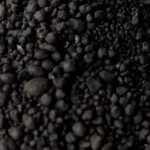
Humate Soil Aeration improves lawn fertilization by enhancing nutrient absorption, promoting microbial activity, and improving soil structure. A mycorrhizal inoculant establishes a symbiotic relationship between fungi and new grass, and an organic bolster is beneficial for lawns recovering from stress.
- Humate Soil Aeration Seasonal Service
- Mycorrhizal inoculant Seasonal Service
- Organic bolster Seasonal Service
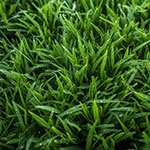
Mowing
Spring is when mowing becomes more frequent. Here are Pro Secrets that will benefit you all year round:
- Keep mower blades sharp: sharp blades ensure a neat and uniform lawn appearance, reduce stress on grass, promote quick healing and prevent diseases.
- Weekly mowing is best: cutting more than 1/3” off grass blades stresses your lawn, causing discoloration.
- Alternate mowing direction: prevents soil ruts.
- Taller grass is better: mowing a lawn tall promotes deeper roots, enhancing resilience and drought resistance. It shades the soil, reducing evaporation for a healthier root system. Tall grass suppresses weeds and maintains a cooler soil temperature, creating a lush and beautiful lawn.
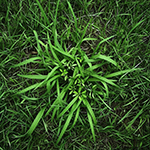
Weeds germinate and start growing in spring
Monitoring soil temperatures is crucial for implementing effective crabgrass prevention measures, such as pre-emergent herbicide applications. Crabgrass and other lawn weeds typically begins to germinate when soil temperatures reach around 55° – 60° F. In our region this can happen as soon as late February. Early prevention and control are essential to maintain a lush and thriving lawn.
- Crabgrass prevention Included with Organo Lawn Programs
- Broadleaf weed control Included with Organo Lawn Programs
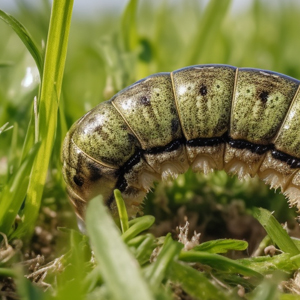
Lawn-damaging insects become active in spring
Monitoring for signs of damage, such as thinning or yellowing grass, is crucial for early detection. Applying insecticides or using biological control methods during vulnerable stages can help manage lawn surface-feeding insects and protect the health of your lawn. The life cycle of surface damaging Armyworms can be as fast as 21 days!
- Treatments against lawn-damaging surface insects Included with Organo Lawn Pro+ Program
Enhance your protection
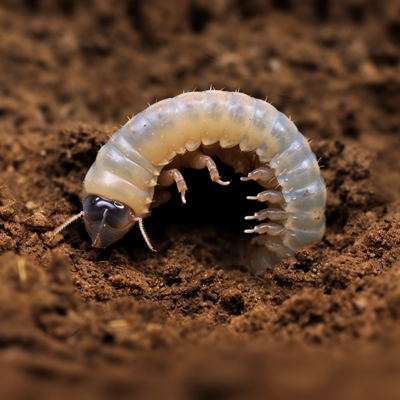
Grubs can destroy a lawn before you even realize that they are present, eating the roots. To prevent this, we offer Spring and Summer systemic applications for season-long protection against larvae damage.
- Grubproofing Seasonal Service
Trees & Shrubs

Spring is a great season for fertilization
When fertilizing trees and shrubs in the spring, it's important to use a balanced fertilizer with the appropriate nutrients. The specific fertilizer formulation and application rate may depend on the type of trees and shrubs, soil conditions, and regional climate factors. Trees and shrubs absorb more nutrients in the spring due to increased photosynthesis: with longer daylight hours and more sunlight, plants undergo increased photosynthesis. This process produces energy that the plant uses to drive nutrient uptake from the soil.
- Well-balanced, slow-release surface fertilizer Included with our Tree & Shrub Fertilization & Protection Program
- Tree Deep Root Fertilization Seasonal Service
Enhance your protection
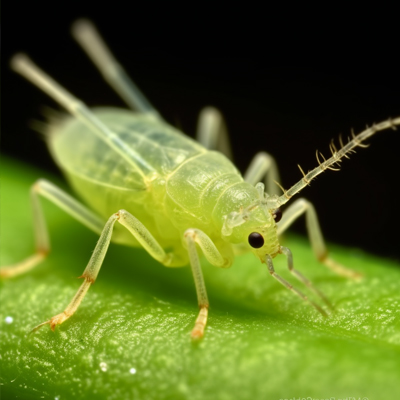
Aphids produce a sticky, messy sap called honeydew as a result of sucking the life out of your trees and shrubs. The honeydew substance on cars, windshields, and walkways is often a byproduct of aphid feeding. Aphids love to attack crape myrtles and rose bushes, among others. Our highly effective systemic treatment uses an IPM approach to target aphids and other damaging insects, while not targeting beneficial insects like ladybugs and praying mantises.
- Merit® Systemic Insectcide Seasonal Service
Summer
Achieving a thriving lawn during the summer involves strategic measures. Use slow-release fertilizer early in the season, ensuring a balanced nutrient profile for steady growth without inviting excessive pests. Regularly monitor for insects like grubs and employ targeted insecticides if needed, considering eco-friendly options. Check irrigation for broken heads and nozzles to ensure proper coverage. These pro tips collectively contribute to a resilient and vibrant lawn throughout the summer months.
Lawn
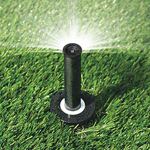
Watering
Proper watering becomes more crucial during the summer.
- Early morning watering is best: afternoon watering causes too much evaporation, and nighttime watering causes disease.
- Maintain soil moisture depth between 4”–6”: when planning watering frequency, a soil probe is the best tool to determine moisture depth. Contact us for a soil probe recommendation.
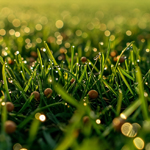
Soil Wetting Agents make Summer watering more efficient
As hydroscopic humectants, soil wetting agents act by reducing soil tensions, allowing for a more effective spread of water throughout the soil, and is very beneficial during low-water years. 2–3 applications will increase watering absorption by at least 50%. This is especially helpful in hard clay soils for better water penetration. Please water in thoroughly for the best results.
- Soil Wetting Agent Seasonal Service
- Irrigation / Sprinklers Service and Repair Seasonal Service
Trees & Shrubs
Maintaining the health of trees and shrubs during the summer involves a combination of strategic watering, fertilization, and insect control.
- For watering, provide deep and thorough irrigation, ensuring the soil is consistently moist but not waterlogged.
- Mulching around trees and shrubs helps retain moisture and regulate soil temperature.
- Apply a balanced slow-release fertilizer in early summer to support growth without causing stress. Monitor for signs of nutrient deficiencies and adjust fertilization accordingly.
- Implement preventive insect control measures, such as neem oil or insecticidal soaps, to ward off pests like aphids and mites. Regularly inspect for early signs of infestation and treat promptly.
Adjust these practices based on specific tree and shrub species, local climate, and individual needs for a robust and thriving landscape during the summer.
- Well-balanced, slow-release surface fertilizer Included with our Tree & Shrub Fertilization & Protection Program
- "Triple Action" Neem Horticultural Oil Seasonal Service
Lawn
In the fall, prioritize key lawn care practices for a robust and resilient lawn:
- Conduct core aeration to alleviate soil compaction, overseed to introduce new healthy growth, improve turf density, and fill in bare patches.
- Apply a fall-specific fertilizer rich in phosphorus to support increased root development. Regularly remove fallen leaves to prevent smothering, and address any lingering weeds with post-emergent herbicides. Adjust the mowing height gradually, and water deeply but less frequently. These pro tips ensure a well-prepared and healthy lawn, setting the stage for reduced winter stress and optimal growth in the following spring.
These pro tips ensure a well-prepared and healthy lawn, setting the stage for reduced winter stress and optimal growth in the following spring.

Fall is the optimal season for lawn core aeration and overseeding
Fall is the optimal season for lawn core aeration as cool-season grasses experience active growth without summer heat stress. This allows for efficient recovery, enhanced root growth, and disruption of weed cycles. Lawn core aeration in the fall minimizes stress on the grass, prepares it for winter dormancy, and promotes overall lawn health by reducing thatch through microbial activity. Overseeding improves lawn density and is the perfect complement to core aeration.
- Lawn Core Aeration Seasonal Service
- Overseeding with Topsoil Seasonal Service
- Overseeding Seasonal Service
Fall Lawn Rejuvenation SPECIAL
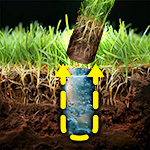
Lawn Core Aeration
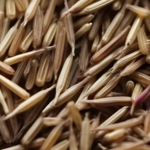
RTF Fescue Overseeding

Starter Fertilizer
RTF Fescue is a NEW advanced fescue turf-type that produces rhizomes — lateral shoots that allow the turf to self-repair.
- For new Organo Lawn Pro+ and Pro customers Organo Lawn Pro Programs
Trees & Shrubs
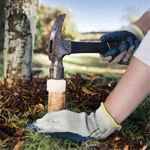
Deep root fertilization for trees in the fall provides essential nutrients directly to the root zone, promoting overall tree health
Fall deep root fertilization for trees is a vital practice, delivering nutrients directly to the root zone. This promotes root development, aids winter preparation, enhances nutrient uptake, retains moisture, improves resistance to pests, and boosts overall tree vitality. Using balanced fertilizers and consulting arborists ensures proper application, making it valuable in urban environments with soil challenges.
- Tree Deep Root Fertilization Seasonal Service
Lawn
- For winter fertilization, apply a specialized fertilizer in late fall, emphasizing higher potassium and lower nitrogen content. This nutrient balance enhances winter hardiness, disease resistance, and root development. Follow recommended application rates based on your lawn size and chosen fertilizer, avoiding excessive use to prevent grass stress.
- In terms of winter watering, continue to irrigate the lawn during dry spells, ensuring the soil remains adequately moist to prevent winter desiccation, especially in windy conditions. Water in the morning when temperatures are above freezing, avoiding evening watering to prevent the formation of ice patches.
Combining these practices will contribute to a resilient and vibrant lawn throughout the winter season.
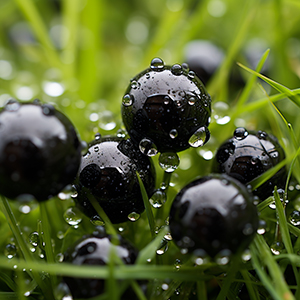
Support your lawn's chlorophyll synthesis to keep it green throughout winter
Iron is a key component in chlorophyll synthesis, which is crucial for photosynthesis and the grass's ability to capture sunlight and convert it into energy. By supplementing with iron during the winter, lawns can retain their green color and vigor, enhancing their resilience and appearance even in challenging cold conditions.
- Chelated iron booster Included with Organo Lawn Pro+ Program
Maximize the green
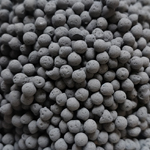
Elevate your lawn's beauty and resilience with our Ironite Winterizer Treatment. As the cold season approaches, this specially formulated treatment infuses your soil with essential nutrients, including iron, promoting a lush and vibrant lawn even in the depths of winter.
- Ironite Winterizer Seasonal Service
Trees & Shrubs
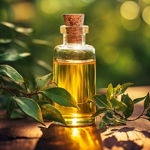
Trees and shrubs benefit from Neem Horticultural Oil during the Winter season
Neem oil is a natural, vegetable oil extracted from the seeds of the neem tree (Azadirachta indica). Neem oil stands out as a "triple action" solution, offering benefits as an insecticide, fungicide, and miticide. Its insecticidal properties make it effective against a variety of pests, disrupting their feeding habits and reproductive processes. As a fungicide, neem oil combats common fungal diseases, hindering their growth and protecting plants. Additionally, its miticidal capabilities make it a valuable tool against mites, preventing damage to plant tissues. The environmental friendliness of neem oil, coupled with its ability to enhance overall plant health, sets it apart as a sustainable choice for integrated pest management. Notably, neem oil targets harmful pests while sparing beneficial insects, ensuring a balanced and biodiverse ecosystem. Its versatility makes it suitable for various plants, providing comprehensive care and promoting resilient and healthy vegetation.
- “Triple Action” Neem Horticultural Oil Seasonal Service

